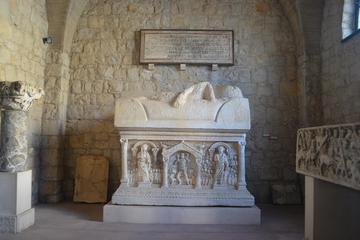Archaeological Museum (Arheoloski Muzej)
TIME : 2016/2/22 10:34:29

Archaeological Museum (Arheoloski Muzej)
A 10-minute walk north of Split's historic downtown is Croatia's oldest museum, which was founded in 1820.
The incentive for the establishment of the museum was provided by the visit of Emperor Francis I to Dalmatia in 1818, which also included visits to Split and Solin (formerly Salona). The original museum building was erected in 1821 next to the eastern walls of Diocletian's Palace, but soon became too small to house the growing number of monuments.
The Archaeological Museum is a repository for artifacts -- jewelry, coins and pottery -- mostly unearthed at Salona in the hills above Split. The collection includes many religious objects used by the people who fled to the palace from Salona during the Avar-Slav invasion in the 7th century. It also displays heavier stone objects such as sarcophagi outdoors.
These 150,000 artifacts (ranging in date from prehistoric times, the period of Greek colonization of the Adriatic, the Roman and Early Christian periods to the early Middle Ages and the period of Croatian popular rulers) are arranged in separate collections.
Notable exhibitions include the collection of stone inscriptions from Salona (around 6,000) and the collections of Graeco-Hellenistic ceramic objects, Roman glass, ancient clay lamps (around 1,600), bone and metal articles, as well as the collection of gems (the largest in the country). In addition, the museum houses an extensive collection of ancient and medieval coins (over 70,000) and a rich library with an archive.
